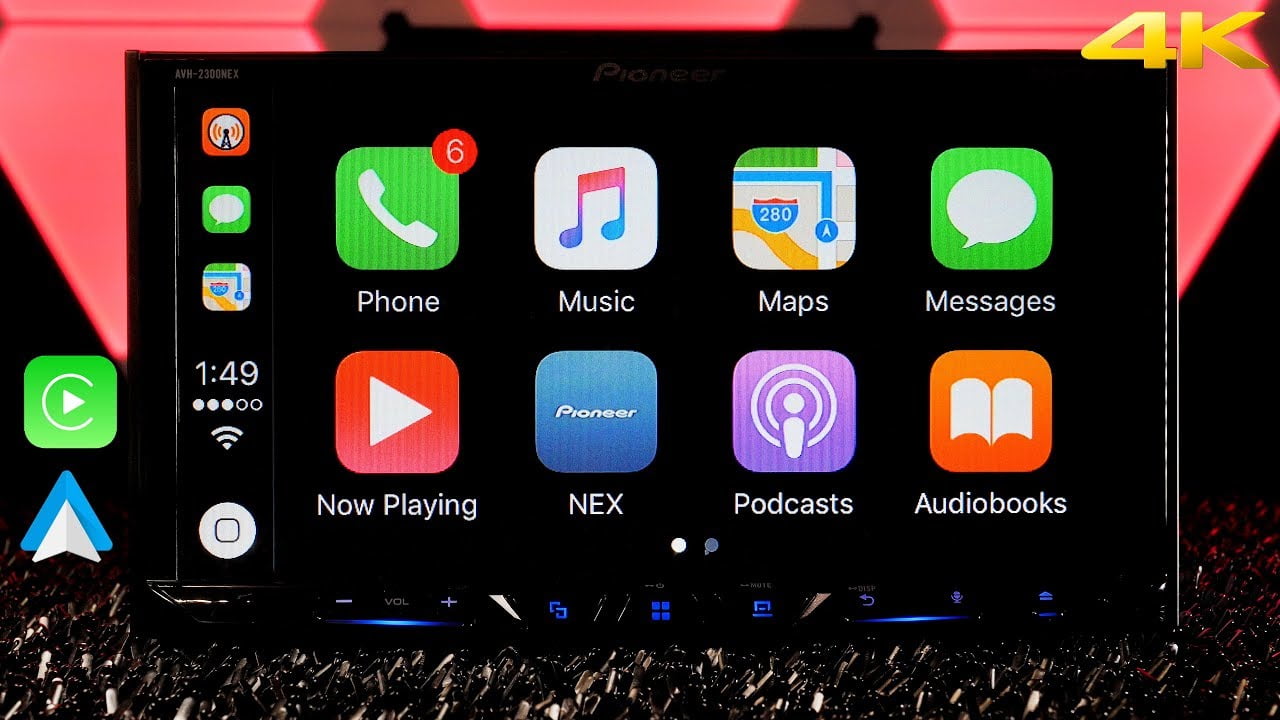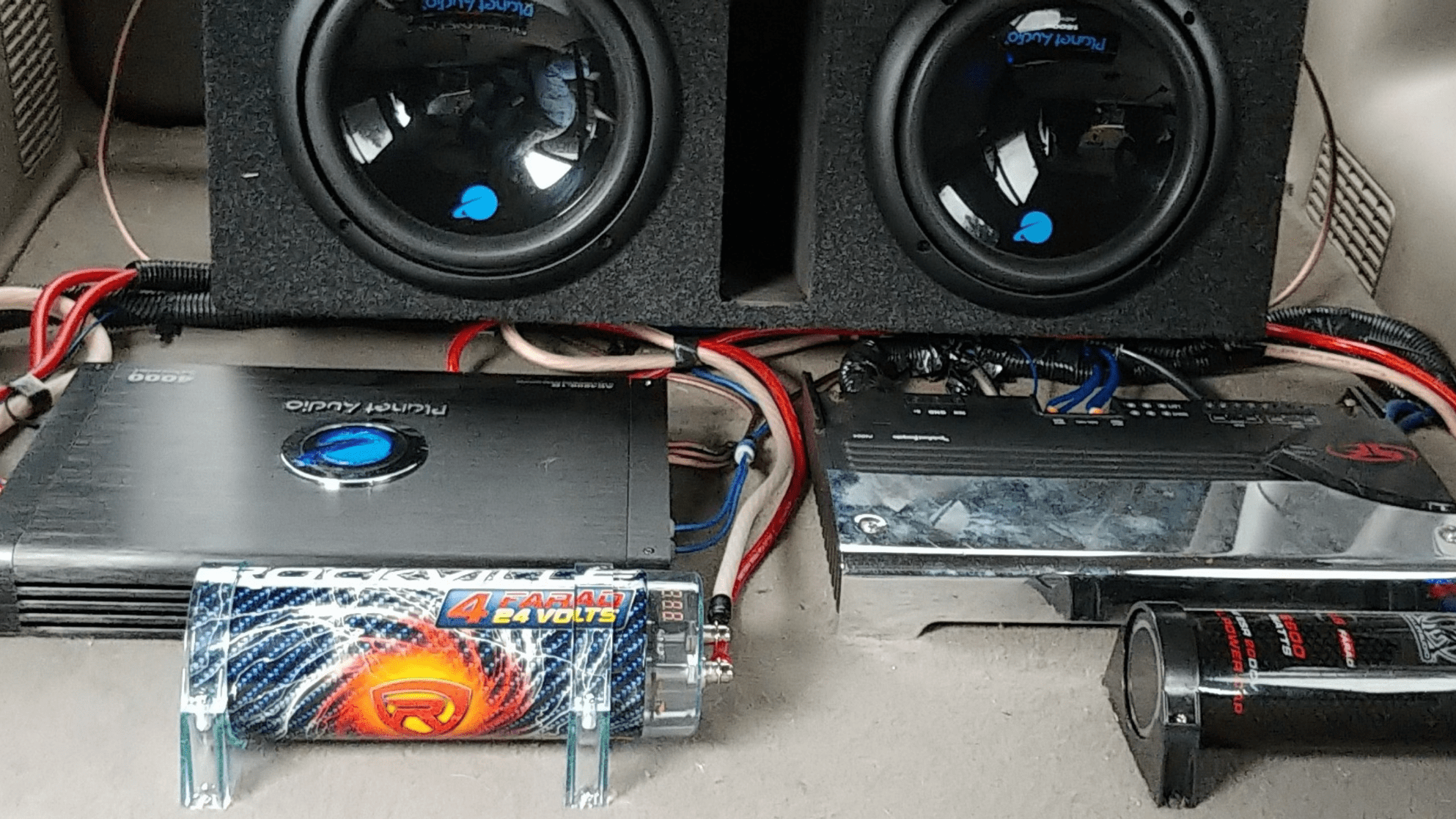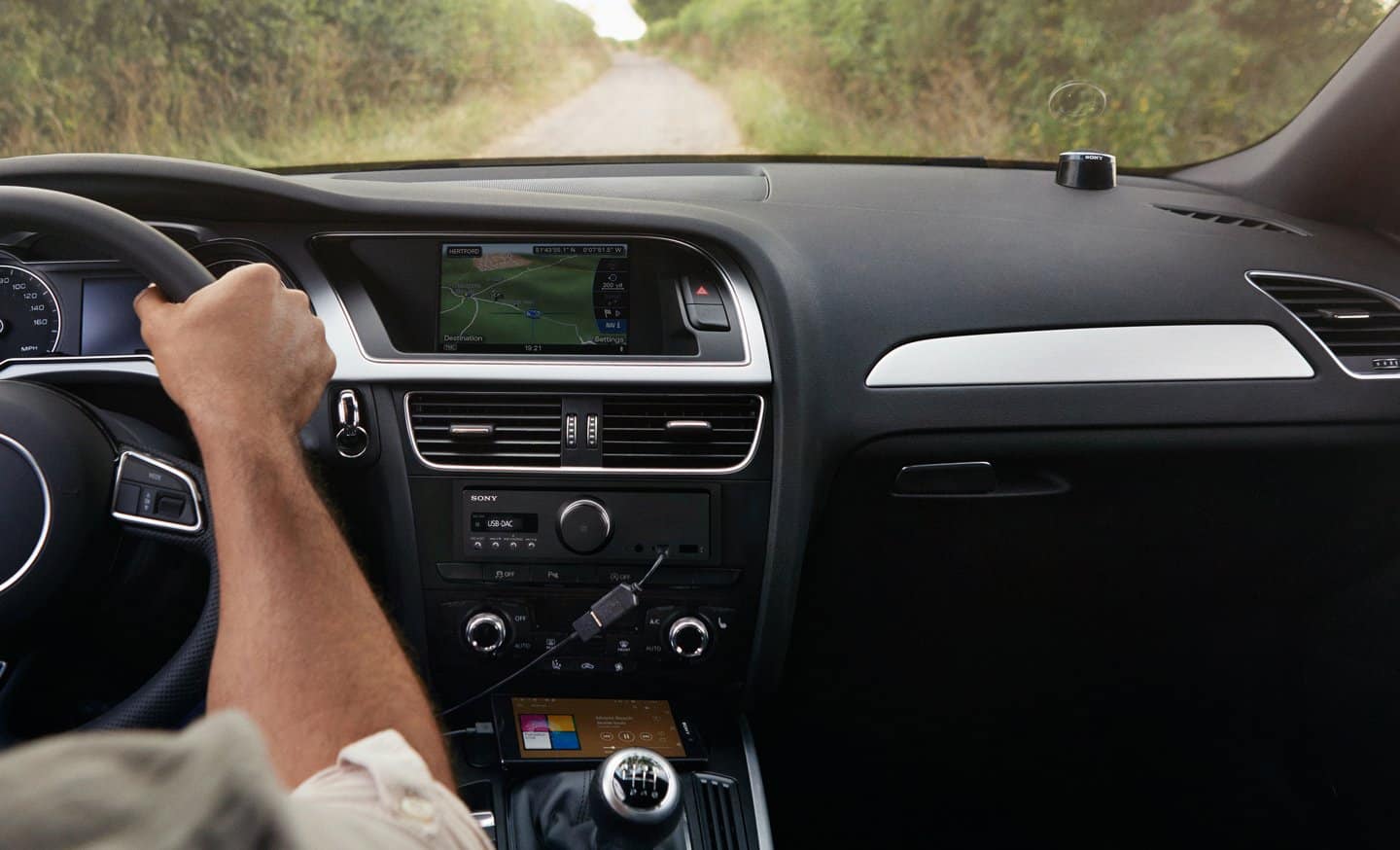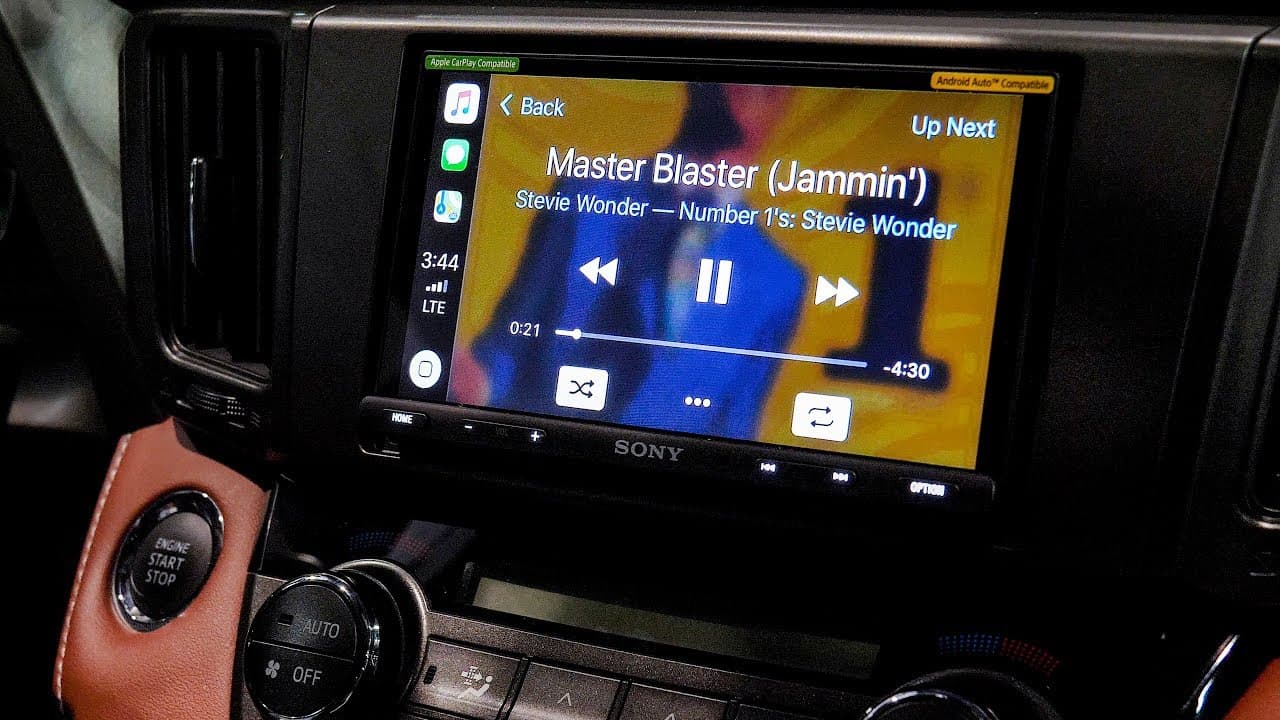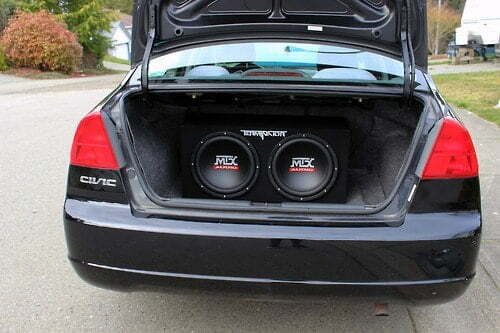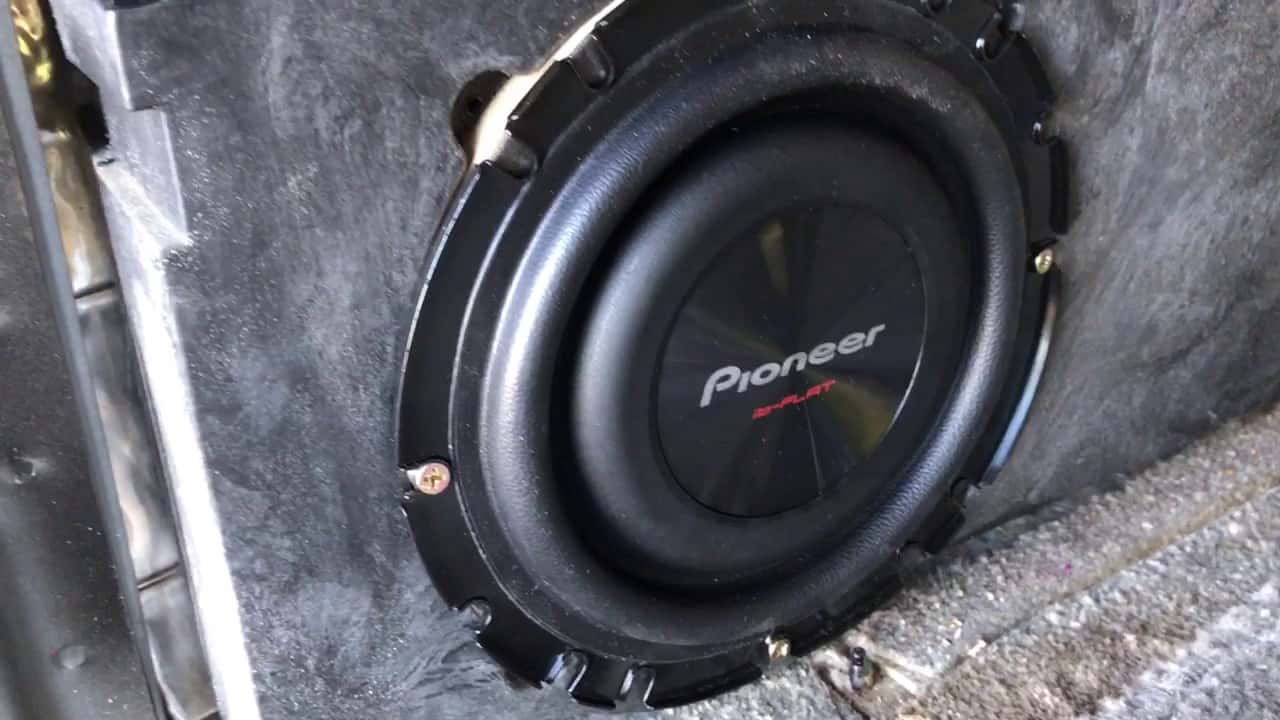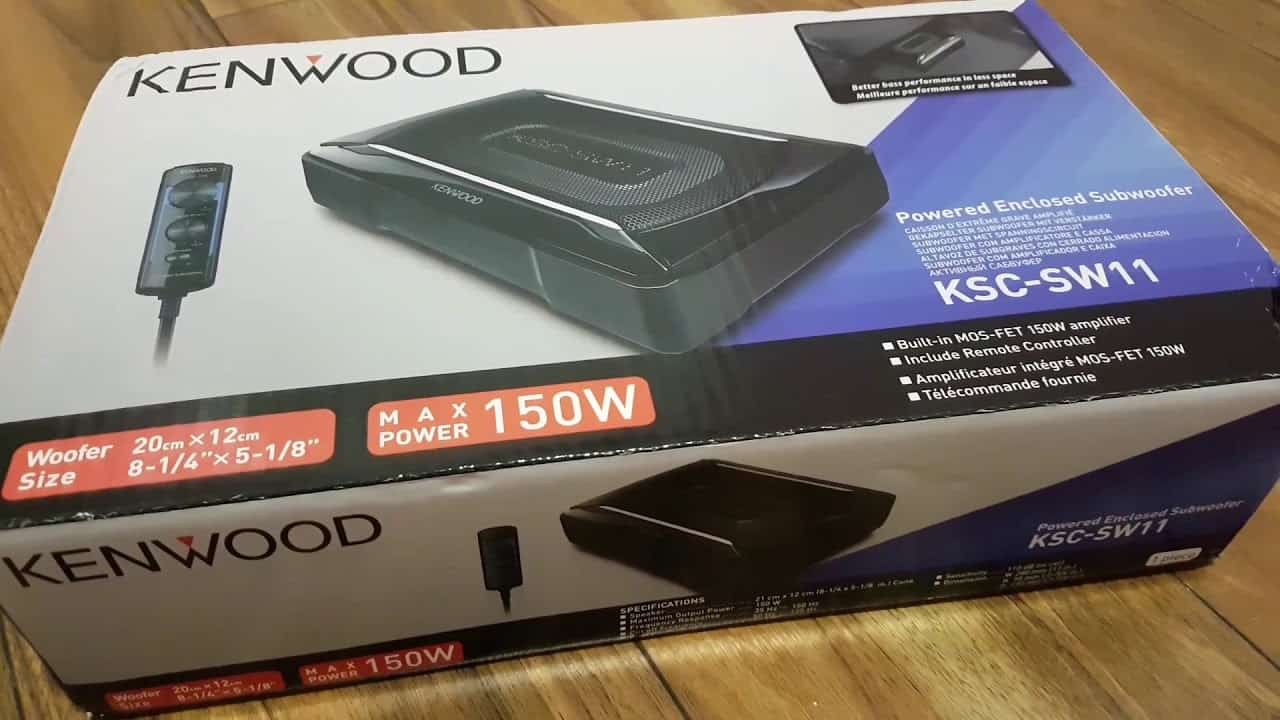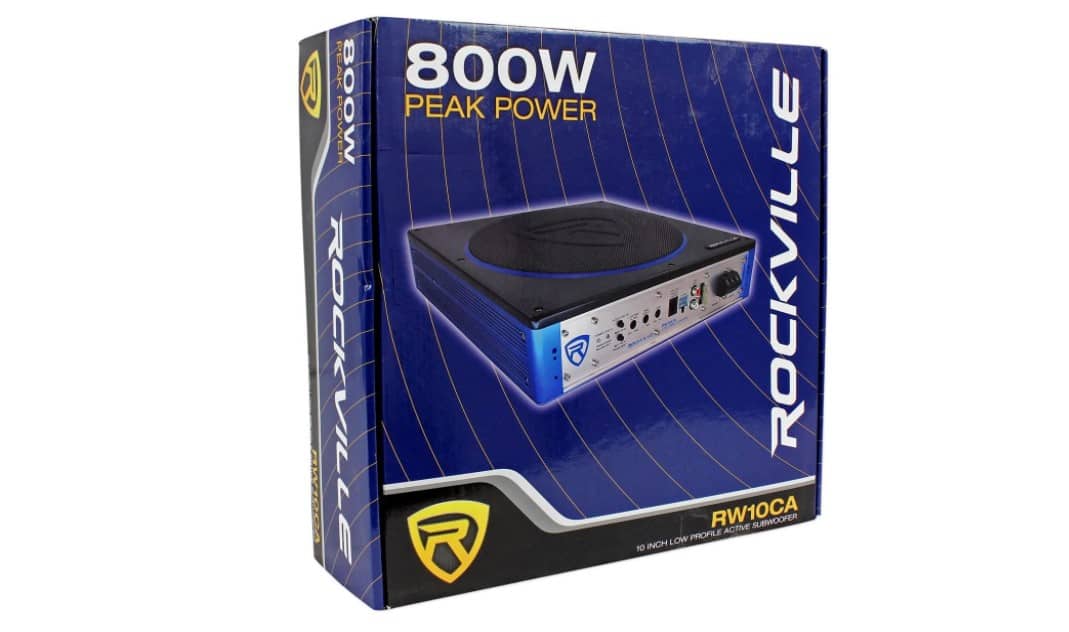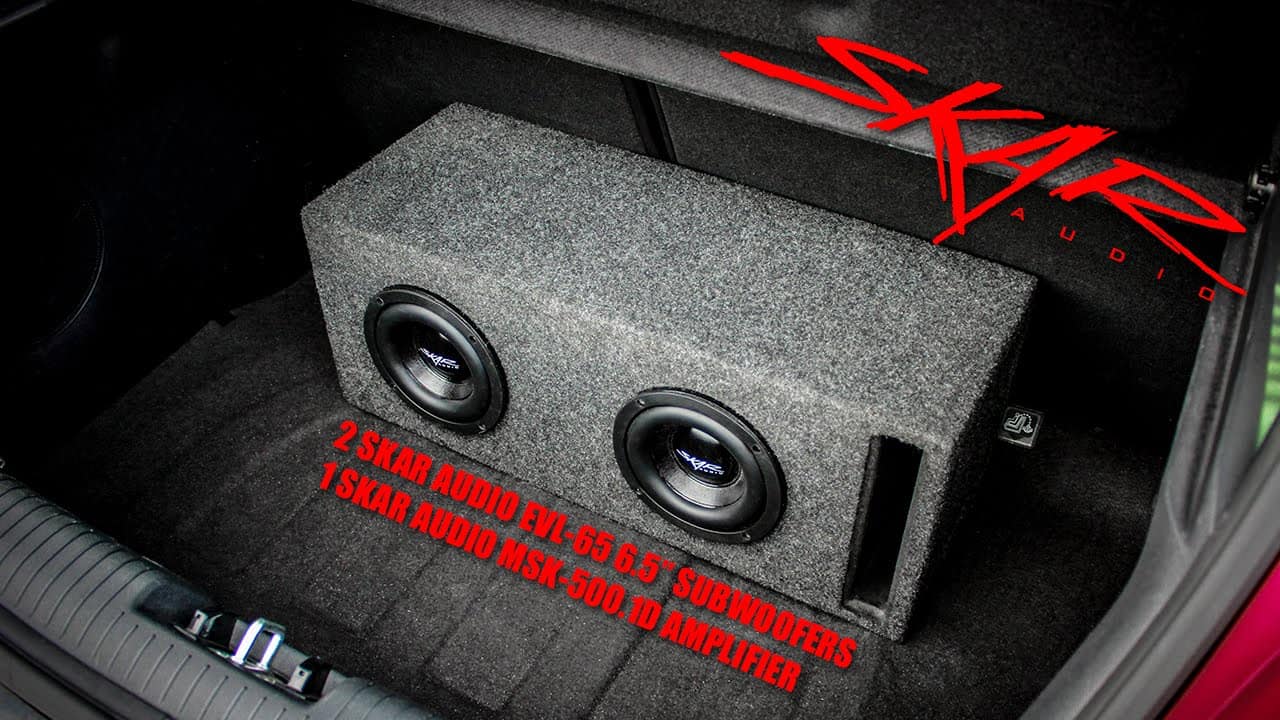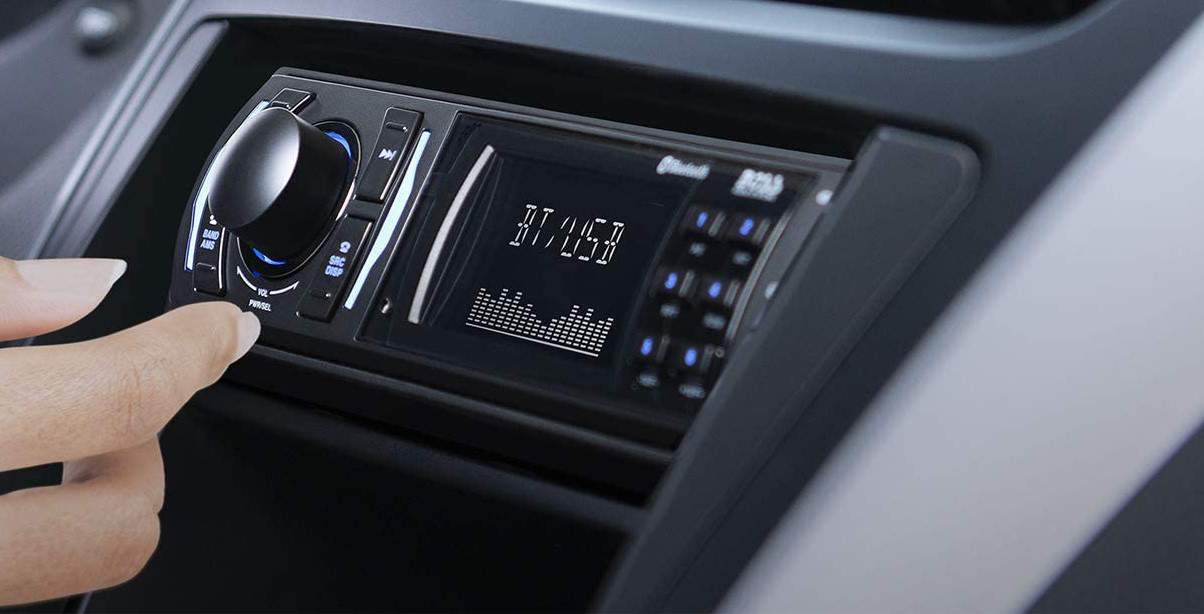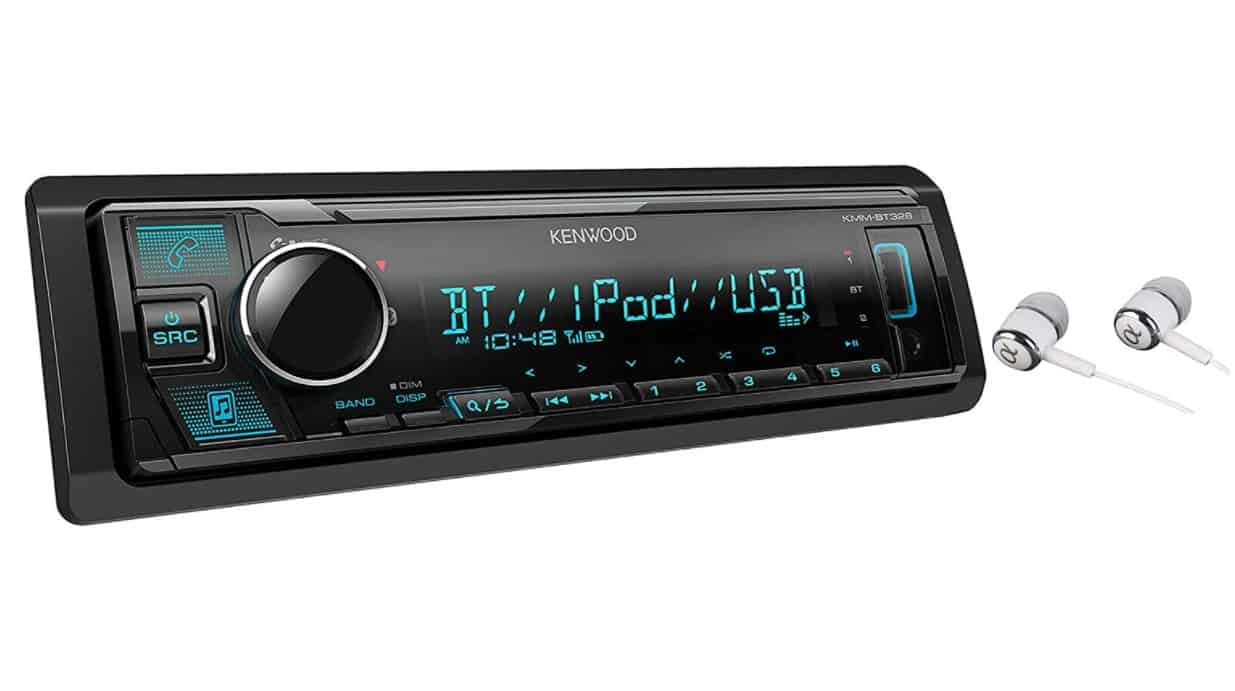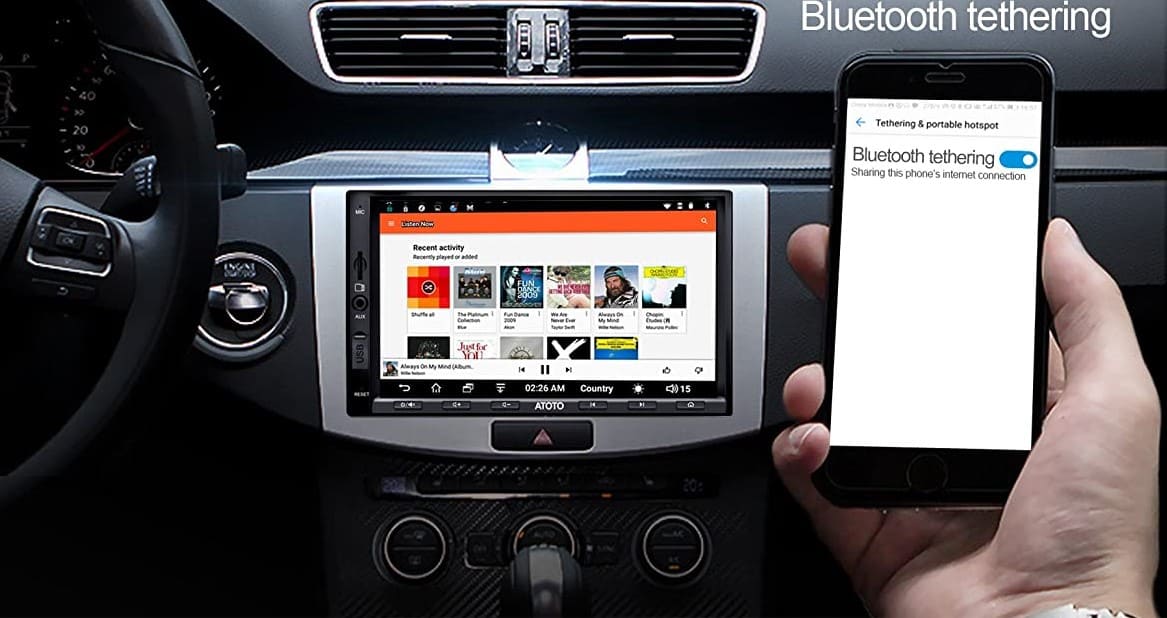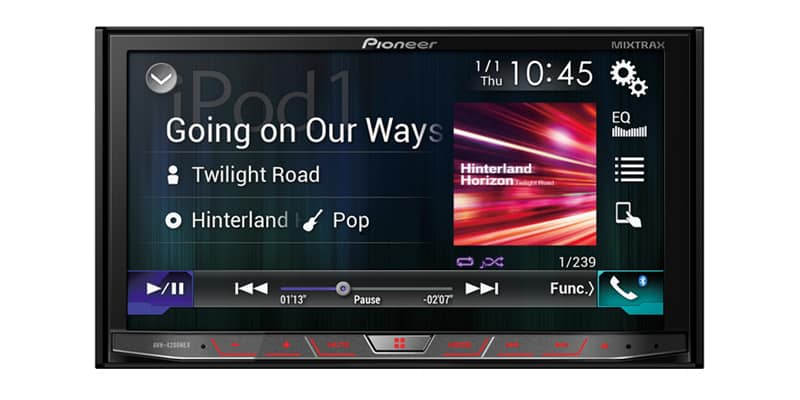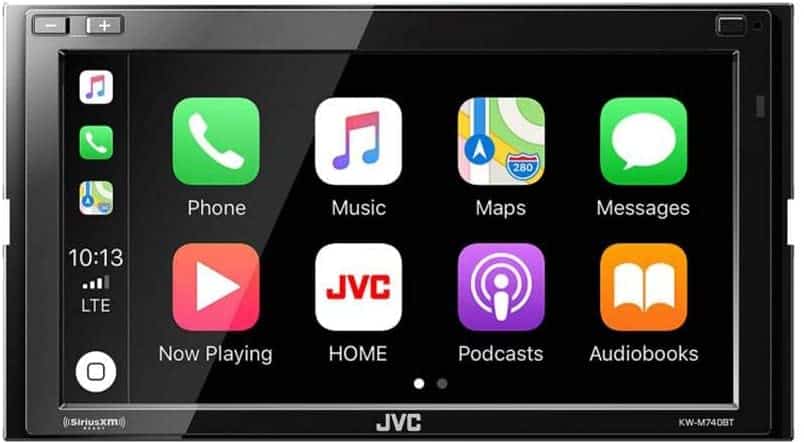When you want to add some kick to your car’s sound system, the best car subwoofers are a good place to start. It’s not easy weeding through the massive selection of speakers and subs, and that’s why we spent over 15 hours researching them. We narrowed the list down to some of the best car subwoofers on the market. Everything you see here packs a punch, at least enough to deliver an excellent audio experience. Almost all of the subwoofers we’ve chosen are plug-and-play, minus a couple of the open-air options. Even though they are relatively easy to install, it’s a bit more work because they don’t come in an enclosure. Wattage runs the gamut from about 150W up to 1500W. Pair one of the car subwoofers on this list with the best car stereo on the market for an audio experience on wheels that’s out of this world.
The top pick is the MTX Audio Terminator Series TNE212D 1200W 12-inch car subwoofer, because it comes with two subs pre-installed inside a cabinet. It offers incredible sound for the price, and since they are enclosed it’s about as close to plug-and-play as you can get. It is the perfect companion to the best luxury cars on the road.
Top 6 Best Car Subwoofers Compared
#1 MTX Audio Terminator Series TNE212D 1200W 12-inch Car Subwoofer – Top Pick
WHY WE LIKE IT: The MTX Audio Terminator houses not just one, but two 12” subwoofers inside a vented enclosure. The frequency response is 10 to 150Hz, which is is an excellent range for punchy bass, especially with the 1200-watts peak power. Plus, the woofers are already seated inside an enclosure so you don’t have to worry about mounting or installing them.
Read Full Review: MTX Terminator TNE212D 200 Watt Enclosure
- 2x 12-inch subwoofers
- Already inside a vented enclosure with rugged construction
- 1200W total; 800W peak + 400W RMS
- On the lower frequency response range; 10-150Hz
The MTX Audio Terminator subwoofer is perfect for anyone that wants a punchy, capable audio experience for a reasonable price, with little to no additional buy-in. Besides two of the other subwoofers on this list, the Terminator comes pre-installed inside a vented enclosure. That means you don’t have to purchase an enclosure separately or mount the subwoofer somewhere inside the vehicle. It’s about as close to plug-and-play as you can get with a woofer of this caliber. The enclosure houses two 12” subwoofers, which have a 1200W total capacity; broken down into 800 peak power and 400 RMS. RMS or root mean square is how much continuous power the speakers can handle. Peak power refers to the maximum overhead the speakers can handle in short bursts.
It features a frequency response of 10 hertz to 150 hertz, which is on the low side compared to the other woofers on the list. That said, it’s not out of the range of accurate tones and audio. You shouldn’t see a quality loss from your source. It’s hard not to recommend the MTX Audio as you’re getting two woofers for the price of one. It doesn’t hurt that the Terminator-style enclosure looks great and offers some rugged protection for the speakers. It’s surrounded by 5/8-inch MDF and aviation grade black carpet. It is the best subwoofers for the car.
#2 Pioneer TS-SW2002D2 600W 8-inch Car Subwoofer – Honorable Mention
We’re sorry, this product is temporarily out of stock
WHY WE LIKE IT: This 8” subwoofer features 600 watts peak power and up to 150 watts RMS. It’s designed for shallow-mount applications meaning you can place it inside a door panel, or even replace stock speakers. Dual voice coils — at 2 ohms each — means it makes optimized use of energy for excellent sound.
Read Full Review: Pioneer TS SW2002D2 8 inch Shallow Mount Subwoofer
- 8” shallow-mount open-air sub
- Listed as 2 ohms, but it’s actually a 4-ohm load when wired up thanks to dual coils
- Can be used for free-air applications
- No enclosure, only the subwoofer
The Pioneer TS-SW2002D2 8-inch subwoofer is meant for free-air or mounted applications. You can install it in the rear deck of a vehicle or fasten it to the fiberboard between the back seats of a car and the trunk. If you want it inside an enclosure like the MTX Audio Terminator you’ll need to purchase an enclosure separately or make one. The TS-SW2002D2 can handle a max of 600 watts, peak power or 150-watts RMS. It features a frequency response of 20Hz to 200Hz, slightly higher than the MTX Audio Terminator.
Related: Find out why a satellite radio for car is one of the best things you can do for your vehicle.
It’s worth noting this sub has the same dimensions as most OEM stock speakers found in Hyundai, Dodge, Toyota and a few other model vehicles. You can swap out the stock units for this one with little to no modification needed. That makes it more desirable for anyone wanting to keep their vehicle set up as close to original as possible, without cutting any holes or mounting the speaker in a random place. It pairs well with the best satellite radio for car. Another quality option is the JL Audio W6v3 12-Inch Subwoofer, which has greater excursion capability and high power handling. It’s best used with amplifier power from 200- 600W and in a sealed enclosure, which is not provided with this subwoofer.
#3 Kenwood KSC-SW11 150W 8-inch Car Subwoofer – Best Plug-and-Play
We’re sorry, this product is temporarily out of stock
WHY WE LIKE IT: The Kenwood KSC-SW11 is an 8 ¼” by 5 ⅛” sub that comes neatly packed inside a compact aluminum enclosure. It also has a built-in amplifier with 75wRMS power and 150wmax capability. As a plug-and-play solution it’s ideal for people that want the power of decent bass, yet have limited space available inside their vehicle.
Read Full Review: Kenwood KSC SW11 Compact Enclosed Subwoofer
- Built-in amp
- Wired remote with volume, and variable low-pass controls
- Slim and compact design
- 150 watts peak power is pretty low
- You’ll need a better amp if you’re installing more speakers
- Decent bass with a punch but not for those looking to rattle nearby cars
The first thing you’ll notice about the Kenwood KSC-SW11 is the slim and compact profile of the enclosure. Most enclosures are bulky which means the best place to store them is in the rear of the vehicle or trunk. Kenwoods enclosure will slide nicely under almost any seat.
Inside is an 8 ¼” x 5 ½” subwoofer that features a frequency response range of 35Hz to 125Hz, meaning it can deliver some impressive bass. A wired remote control comes attached to the unit, with a 16’ cord, plenty long enough to reach the front of any car or truck. Plus, a built-in amplifier provides 75 watts of RMS power with 150 watts maximum. It’s pretty much plug-and-play, ready to use right out of the box. You may also want to check out the best jump starter so you don’t get stranded with only your music.
#4 Rockville RW10CA 800W 10-inch Car Subwoofer – Thinnest Profile
WHY WE LIKE IT: By far, one of the slimmest enclosures you’ll find, Rockville’s RW10CA 10” subwoofer offers 800 watts of peak power and 200 watts RMS. With a frequency response of 20Hz to 150Hz — on par with most other woofers in the list — you’ll get some powerful lows and clear highs.
Read Full Review: Rockville RW10CA Profile Powered Subwoofer
- 800W peak power + built-in amplifier
- One of the thinnest active subs on the market, as the enclosure is just 2.7-inches thick
- Includes both low-level RCA input and high-level inputs with auto turn-on
- Self-contained amp so you cannot power additional speakers
- Some reviews have reported failures after just a year, enough to warrant a mention here
The Rockville RW10CA subwoofer comes inside a thin blue enclosure, just 2.7-inches thick. Adorned with a neon blue and black design, it looks like something straight out of a cyberpunk universe. It’s meant to find under car seats, of course, but you could place it virtually anywhere.
On the back of the unit you’ll find something that none of the other subs in the list have, several high-level inputs and convenient controls. For instance, there are auto-turn on and phase-shift switches, low-pass filter, bass boost and gain level knobs, and a variety of inputs. It’s partly due to the enclosure the sub comes installed in, but welcome nonetheless. It enables a considerable degree of sound personalization despite the rigid configuration. Just make sure you have the best radar gun with you so you don’t get a ticket while enjoying the sound. Or 8 of the best radar detectors.
#5 Skar Audio EVL-65D2 400W 6.5-inch Car Subwoofer – Most Bang for Your Buck
WHY WE LIKE IT: At 6.5-inches the Skar Audio EVL-65D2 sub is small yet highly capable. It features a peak power of 400 watts with an RMS of 200 watts. That translates to punchy sound, especially with its dual 2-ohm coils and low-end frequency response rating of 61Hz. The Skar is ideal for those who want a compact sub that can still deliver excellent audio.
Read Full Review: Skar Audio EVL 65 D2 Subwoofer
- 400W peak power and 200W RMS
- Excellent low-end frequency response for the size at 61Hz
- 2-ohm dual voice coil enables more effective use of energy
- 400 watts peak power is low but suitable for the size
- Open-air means supplying a separate amplifier
The Skar Audio EVL-65D2 is the smallest subwoofer on the list, yet still holds up in terms of power. With a 400-watt peak limit and 200 watts RMS, you’re looking at some exceptionally “hard-hitting” lows.
It is designed for open-air applications, so you’ll need to supply an amplifier but that also means you can install the sub just about anywhere inside the vehicle. That should be easy enough considering the 6.5-inch size, which is on the lower end of the spectrum. Despite being smaller, the Skar Audio EVL-65D2 packs a wallop, thanks to the 400W peak and dual voice coils. That makes it the ideal choice for anyone with limited space yet still wants the power and sound equivalent of a much larger subwoofer. Be sure to also check out Rockford Fosgate products, which is a reputable company known for its quality car stereo products for decades. For example, there’s the Punch P3D2 Subwoofer, a powerful option with 1200 watts of power handling. It uses anodized aluminum to help prevent overheating and has soft touch rubber over-mold to provide better grip. There’s also the Prime 6.50″ 3-Way Full-Range Speaker, which provide superb sound quality for a great price and features polypropylene cones, a silk dome Piezo tweeter, and midrange. You may also want to read about the best breathalyzer to have with you in your car.
#6 Planet Audio AC10D 1500W 10-inch Car Subwoofer – Best Open-Air
WHY WE LIKE IT: For an open-air 10” subwoofer, 1500 watts is an incredible peak power limit and that’s what the Planet Audio AC10D is rocking. It also features a delightfully understated design. A resonant frequency of 39Hz with a sensitivity of 87Db means this thing will pack a punch with some booming lows and decent highs.
Read Full Review: Planet Audio AC10D Voice Subwoofer
- 1500W peak is a lot of power
- Dual voice coil offers maximum energy efficiency
- 3-year “Platinum online dealer warranty” if purchased via Amazon
- Need to supply a separate amp
- Too large to fit in most existing stock configurations
The Planet Audio Anarchy AC10D is a 10-inch subwoofer with dual voice coils. The coil allows the sub to produce the right ohm load during operation, which delivers maximum efficiency. Essentially, it lowers the electrical resistance increasing the power flowing to the speaker from the amp — which just means it’s making more effective use of the energy. At 1500 watts peak power, that’s important because it enables you to run the sub at max levels for longer and more accurately. You could also install additional subwoofers thanks to the improved load. You may also want to check out the best transmission jack for your garage.
With a resonance frequency of 39Hz and sensitivity of 87Db the sub will need a bit more energy to deliver its powerful lows. If you’re getting a sub this size, you probably have a powerful amp in place already. It will not interfere with the best CB radio either.
How We Decided
Subwoofers are a tricky read, at least on paper. When looking at a bunch of numbers and specifications, it can be challenging to discern which offers the best audio quality, and it’s even more difficult choosing the most bang for your buck. Something like the best car alarm is more straightforward.
Do you go with an open-air unit that you’ll have to install yourself, or choose something plug-and-play friendly that already comes mounted inside an enclosure?Of course, we chose the best from both worlds so that everyone has an option available to them. Open-air woofers and speakers are arguably the most custom-friendly because you can pretty much install them anywhere. They’re also excellent if you’re looking to replace stock speakers.
Enclosures tend to come with a built-in amp, however, which you’d have to buy separately when installing open-air subs. The tradeoff is that they’re generally not as compact, so you have to have the space for them inside your vehicle, whether that’s under a seat or inside the trunk. During our search for the best car subwoofers, we considered both variants, open-air and enclosed.
Everything on this list falls within a reasonable frequency response range, especially for the 5 to 12-inch sizes these woofers come in. That means they will provide more than enough bass to create a punchy audio experience, particularly within the confines of your vehicle. You may not be blasting away at the world around you, but you will certainly feel the power, as will your passengers.
Product Category Buying Guide
The Most Important Features to Consider
- Enclosure vs Free-Air
Depending on the brand, you may be looking at what’s called a free-air or open subwoofer, or one that comes pre-installed inside an enclosure. The difference between them is quite simple. Free-air subwoofers are meant to be installed within an existing space inside the vehicle, often replacing stock speaker configurations. Enclosures, on the other hand, are meant to be placed as-is inside the vehicle, either under a seat or in the trunk area. Sound quality or punch depends more on the size of the subwoofer so that’s of no concern when choosing a type. For smaller vehicles and sedans, a sub enclosure would most likely have to be placed in the trunk, unless there’s no need to use the rear seats. For larger vehicles with more room, that’s less of a concern. Free-air or open subwoofers, on the other hand, can be placed just about anywhere provided you have the wherewithal and wiring to power up the speaker. You can seat them in existing speaker enclosures, inside door wells, and more. You could also build a custom enclosure to house them if you so desired. - Built-in Amplifier
In most cases, the existing pre-amp — CD or media player — inside a vehicle does not provide enough power to support most speakers, let alone a large subwoofer. If you try to use a subwoofer without supplying enough energy, the sound quality will suffer considerably and it will also put a strain on the speaker, which will eventually ruin it. It might even steal power that would go to other audio and support systems, including stock speakers. The easiest and best way to deal with this is to include a capable amplifier alongside any subwoofers or speakers you install. Some of the enclosure-based subs already come with a built-in amplifier. However, some do not, especially the free-air subwoofers you see on the list. When choosing a subwoofer for your new audio setup, keep this in mind. If you do not see that an amp is included with the sub — or built into the enclosure — it’s something you will have to purchase and install separately. - RMS vs Peak or Max Power
There are generally two wattage values for speakers, subwoofers included. The first is called RMS and stands for root mean square or mean power. It denotes how much continuous power a speaker can handle, and is generally the lowest number of the two. The second value is called either peak or max power and refers to the maximum power limit a speaker can utilize in short bursts. It is perhaps better explained with real values. A speaker with 60W RMS and 120W peak, for instance, can handle 60 watts of continuous power, with the occasional burst of 120 watts without being damaged. Most speaker and subwoofer manufacturers will provide you with both values. You’ll need to pay attention to these wattage values when choosing an amplifier. - Frequency Response
The frequency response range or rating tells you at precisely what decibel range a speaker is considered accurate. It may seem like a bunch of random numbers, but if you know what you’re looking for — the variation specifically — then you can easily discern the difference in audio quality between units. The reason why it matters so much is that speaker manufacturers tend to design their hardware and software differently from one another. That means two speakers of the same size and dimensions, albeit from different manufacturers, can sound totally different. It’s all about the variation. The response is written as a range, often followed by the variation rating. For example, 36Hz to 20 kHz +/- 3 dB. That range tells you that anything that falls between 36Hz and 20khZ will be accurate, within a span of plus or minus 3 decibels. Armed with both these values — the range and variation — you can also determine how high or low a speaker goes. Lower ranges primarily mean lower bass with higher treble sounds. 20Hz to 25kHz +/- 3dB would have much lower bass and higher treble than say 36Hz – 20kHz +/- 3dB. Choosing which is the better speaker is subjective and mainly depends on what you’re looking for. If you want something with higher bass you’d go with the higher response range, for example. - Resonance Frequency
Similar to frequency response, the resonance frequency is a value you will see provided for solo or open-air subs. The denoted value is the frequency at which the speaker responds under pressure. 39Hz, for instance, accompanied by a value of 87 Db means it will respond under that particular frequency with the given decibel range. - Size
The final feature to consider when choosing a subwoofer — and a factor that applied to our selection in the list — is the overall size of the speaker. The larger the subwoofer the bigger the punch. Although this isn’t necessarily the case all the time. Sometimes smaller subwoofers can be more powerful depending on the construction and the wattage. It’s also possible for two smaller subwoofers in a paired configuration to be just as powerful, if not more so, than a larger unit. Small to mid-size subwoofers are excellent if you’re simply replacing stock speakers or subs. The larger size subs are for when you want more bang. 5 to 8 inches tends to be the sweet spot for auto subwoofers, with anything larger generally needing a custom space or enclosure.

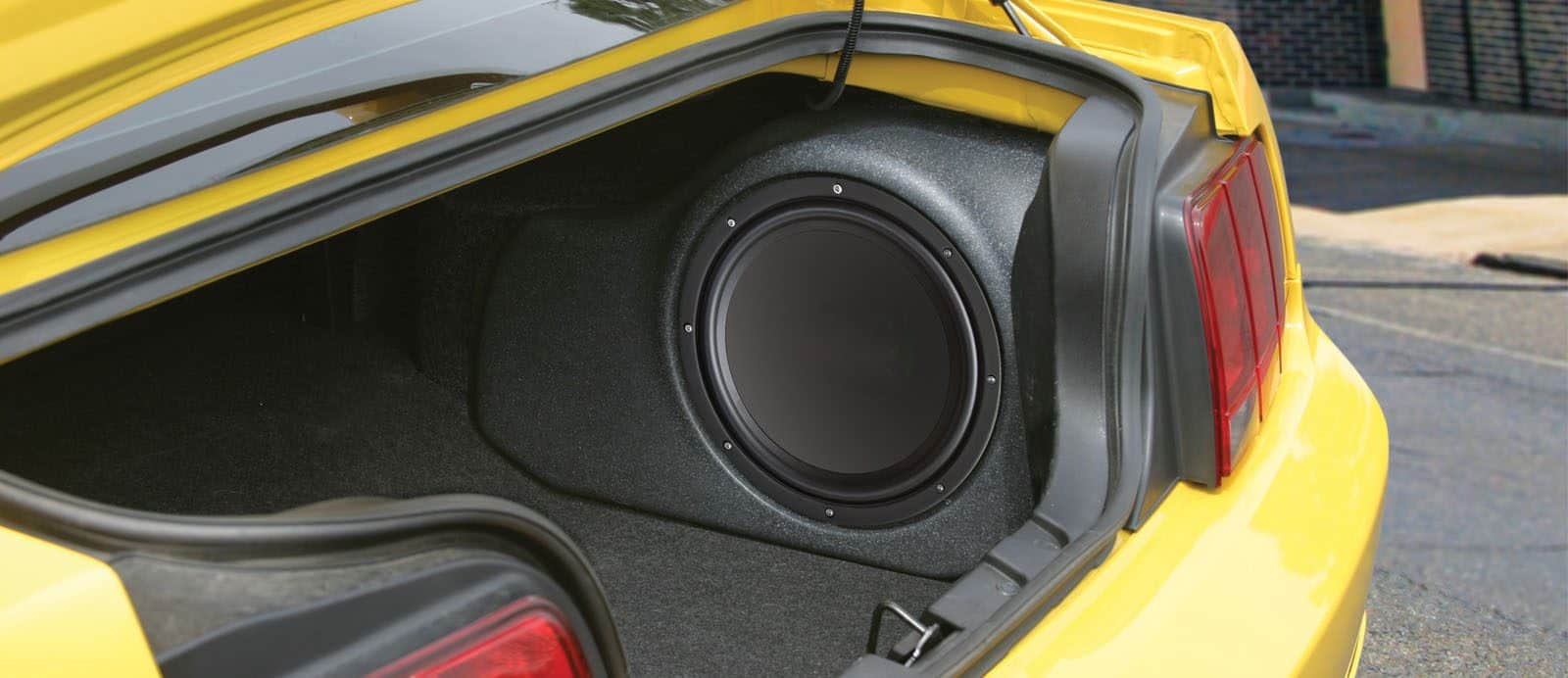


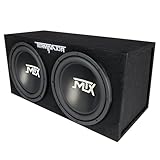





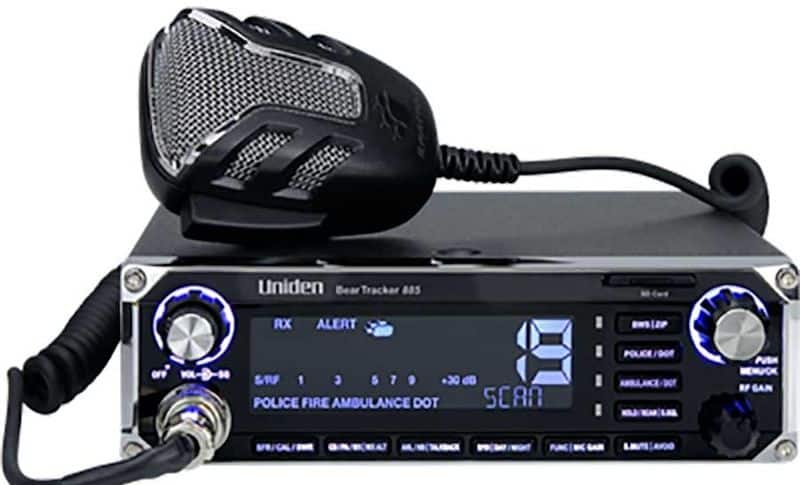
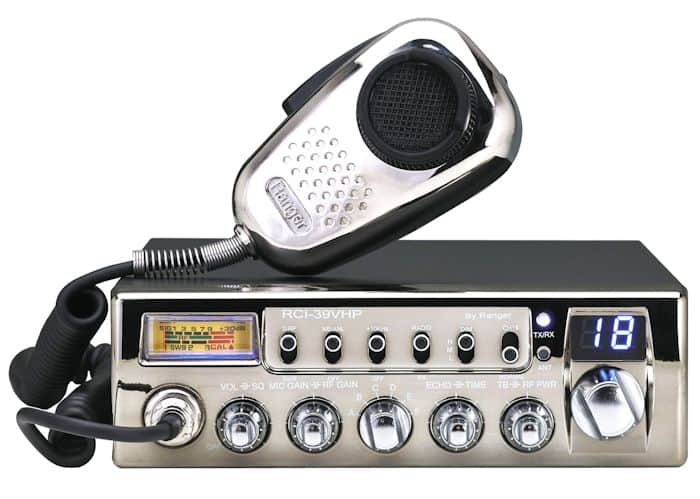
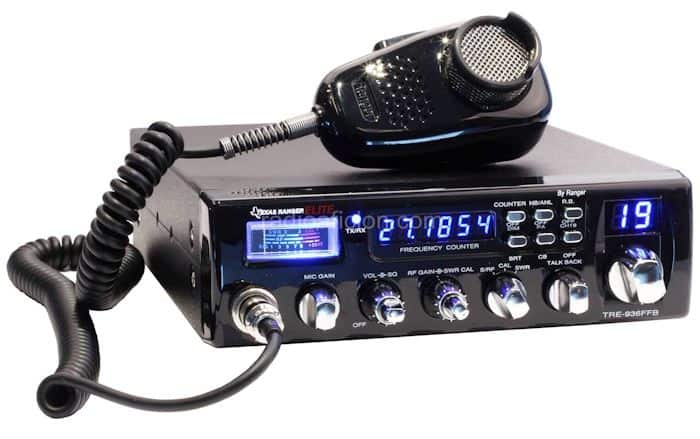
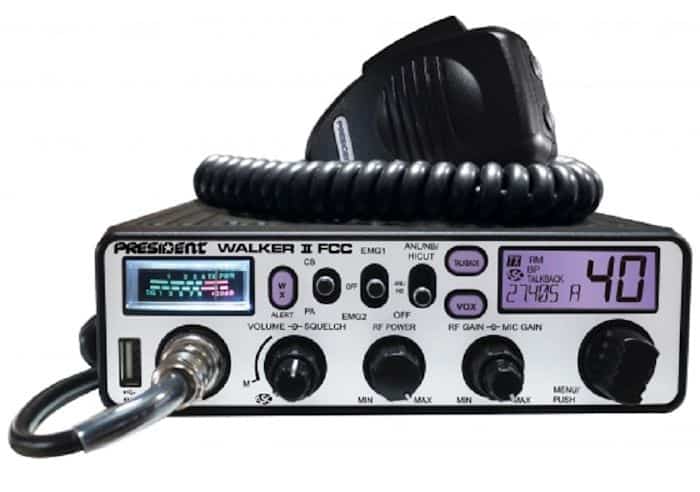
![Best Cars in [year] ([month] Reviews) 11 Best Cars in 2026 (January Reviews)](https://www.gadgetreview.dev/wp-content/uploads/best-cars.jpg)
![Best Car Stereo in [year] ([month] Reviews) 12 Best Car Stereo in 2026 (January Reviews)](https://www.gadgetreview.dev/wp-content/uploads/best-car-stereo-image.jpg)
![Best Car Accessories in [year] ([month] Reviews) 13 Best Car Accessories in 2026 (January Reviews)](https://www.gadgetreview.dev/wp-content/uploads/best-car-accessories-image.jpg)
![Best Rooftop Cargo Carrier Boxes in [year] 14 Best Rooftop Cargo Carrier Boxes in 2026](https://www.gadgetreview.dev/wp-content/uploads/best-waterproof-roof-top-cargo.jpg)
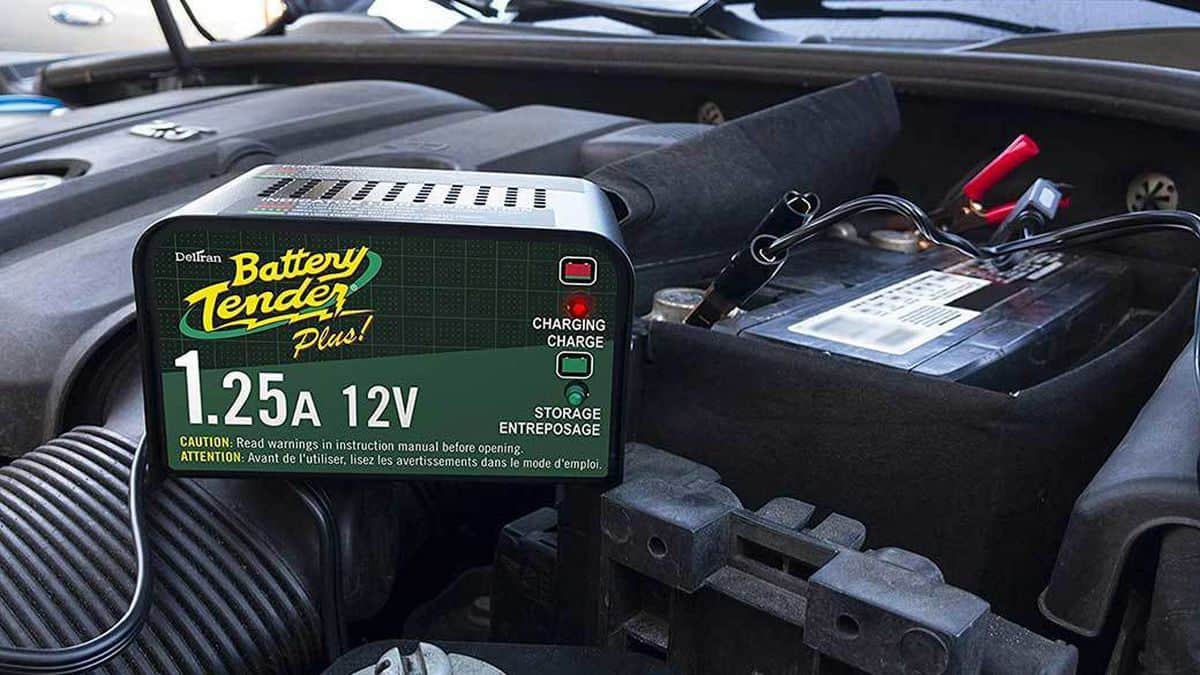
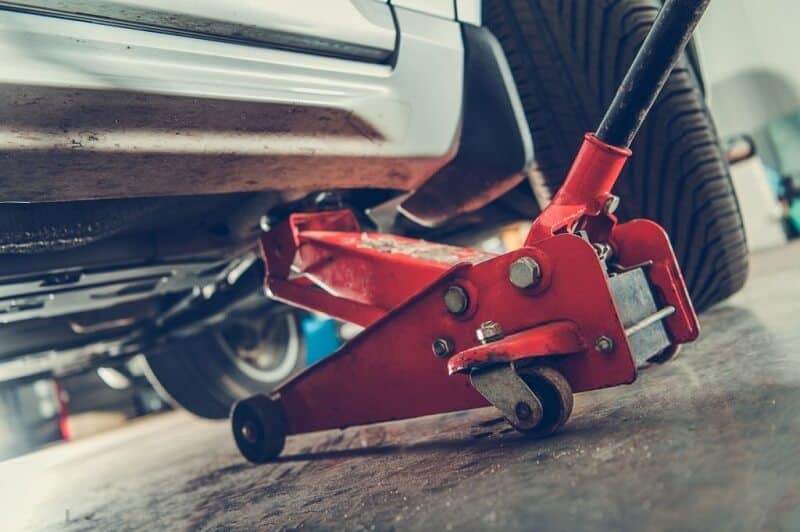
![6 Best Car Air Fresheners in [year] 17 6 Best Car Air Fresheners in 2026](https://www.gadgetreview.dev/wp-content/uploads/best-car-air-freshener.jpg)
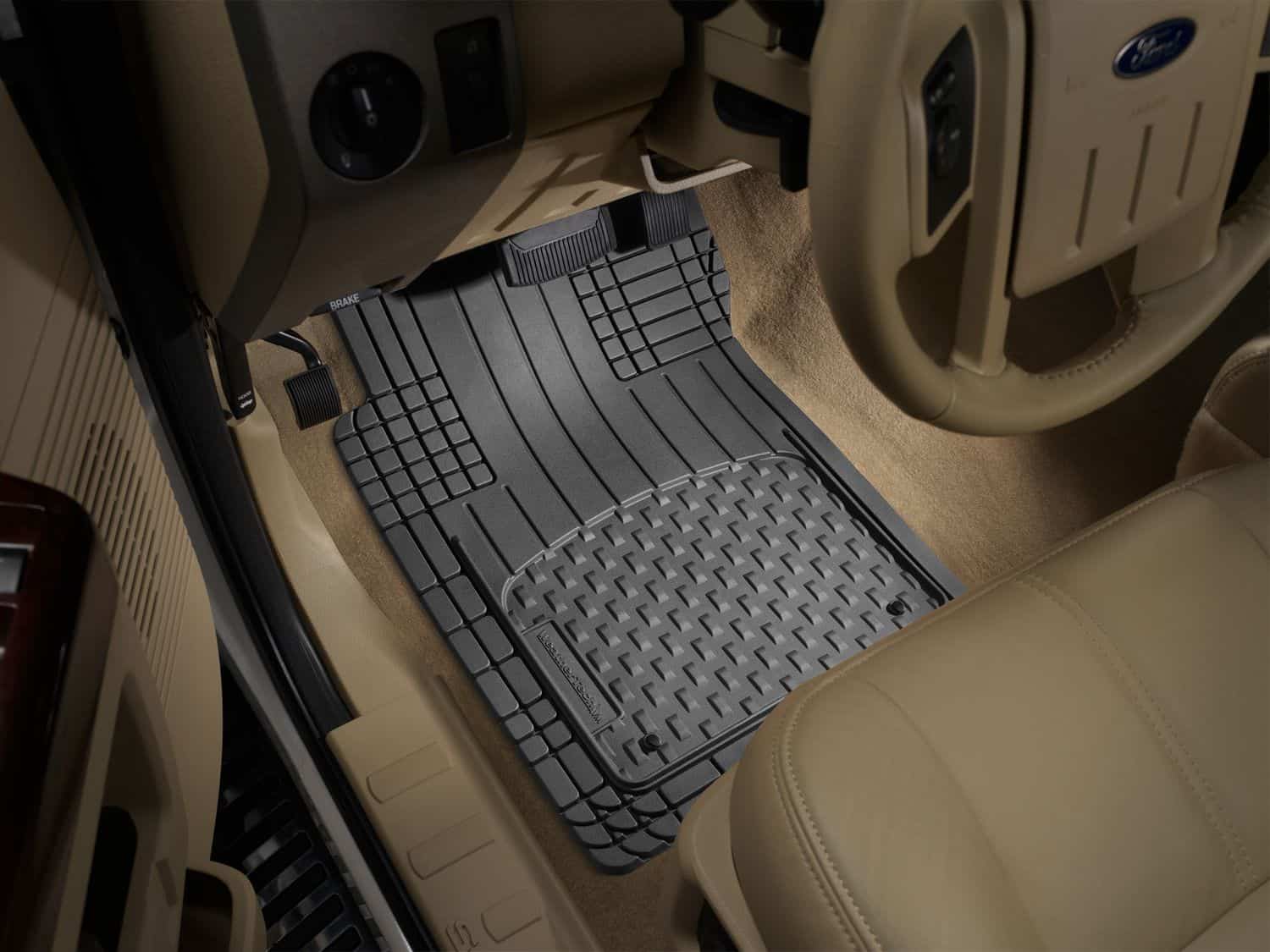
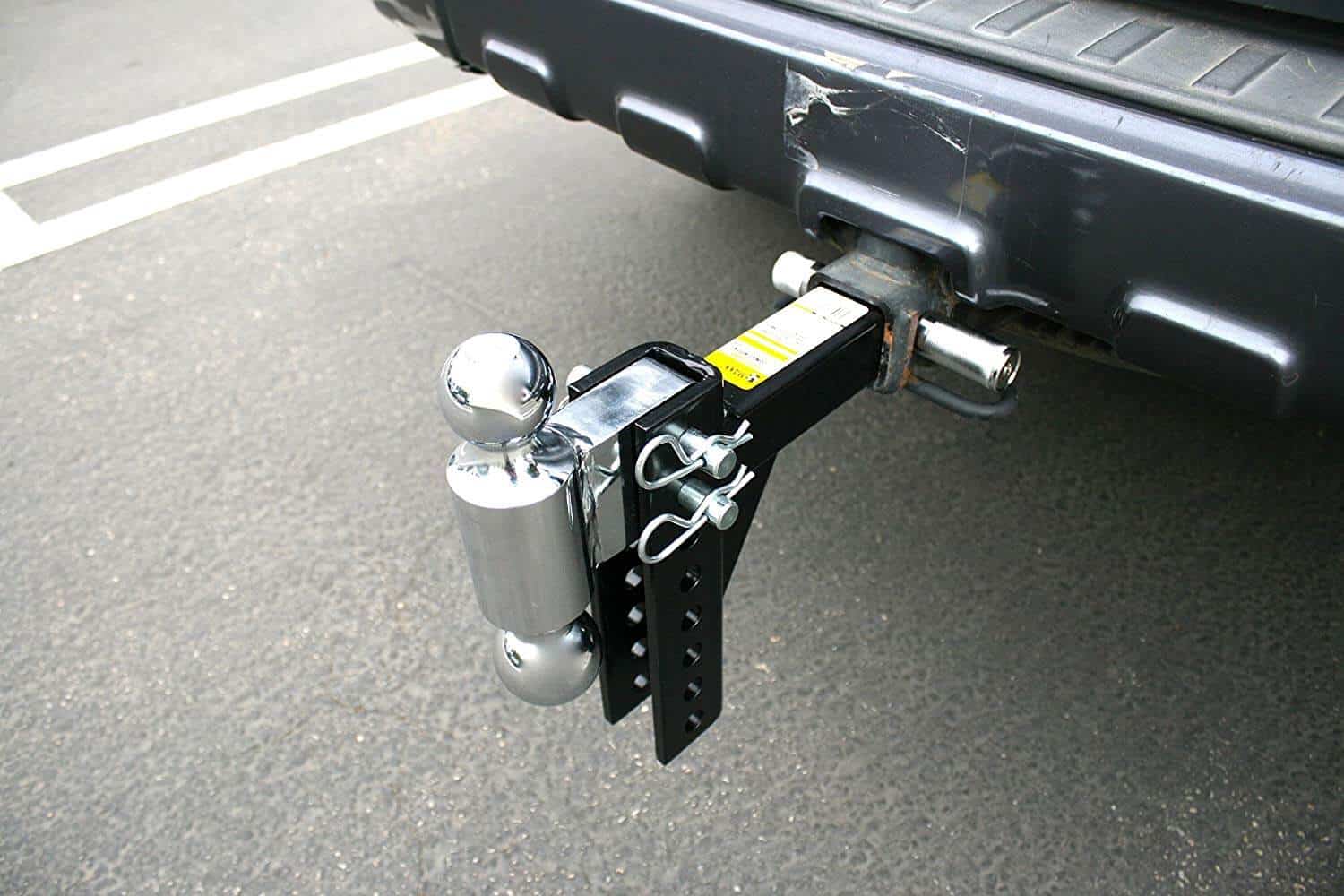
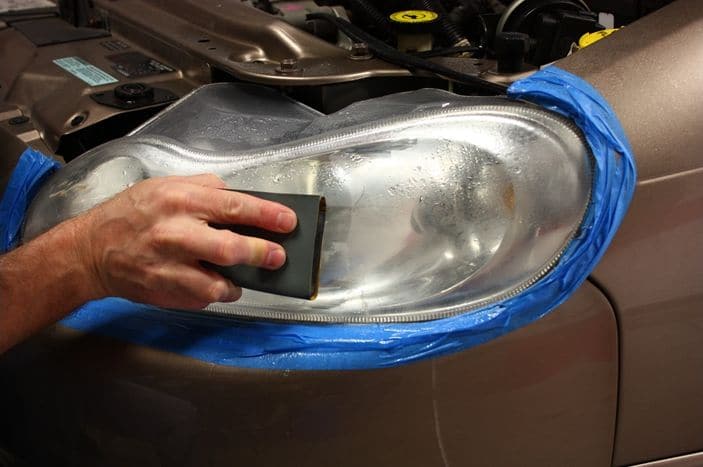
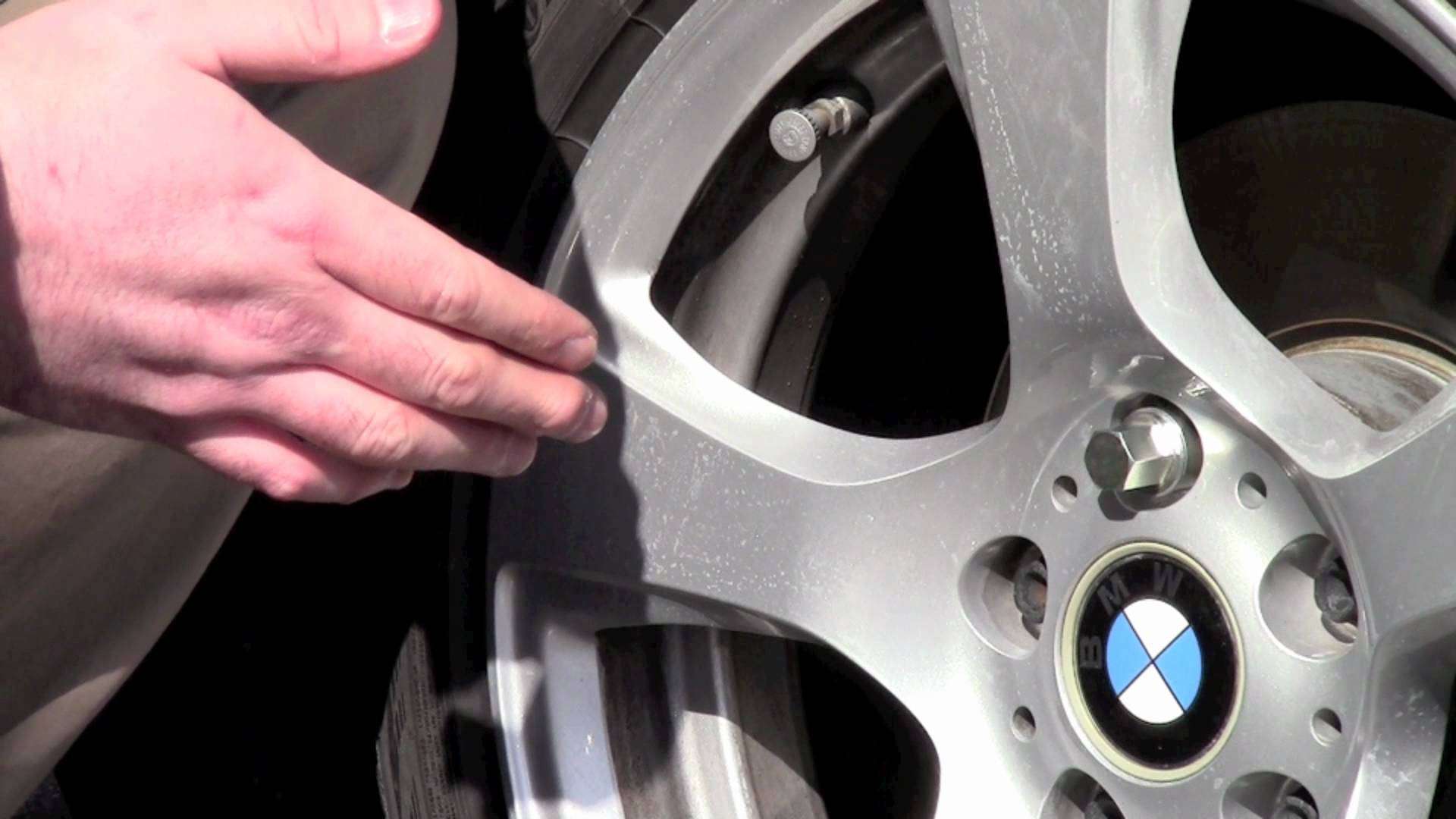
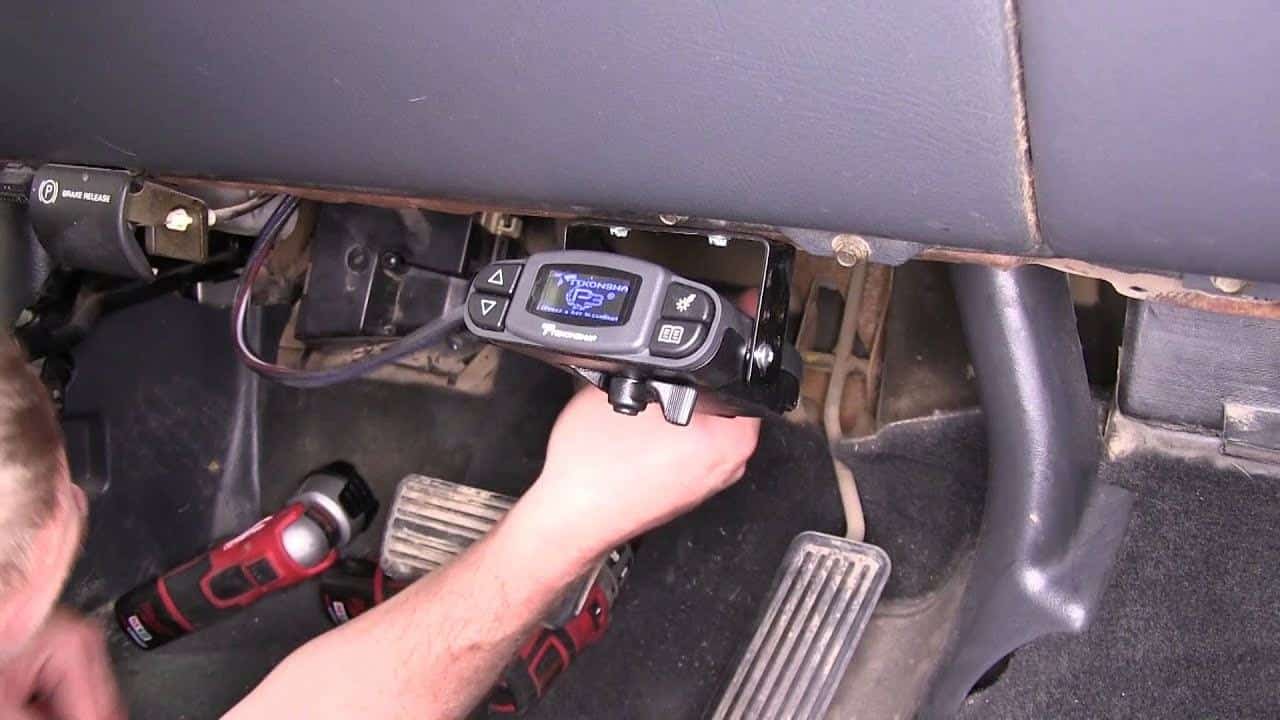
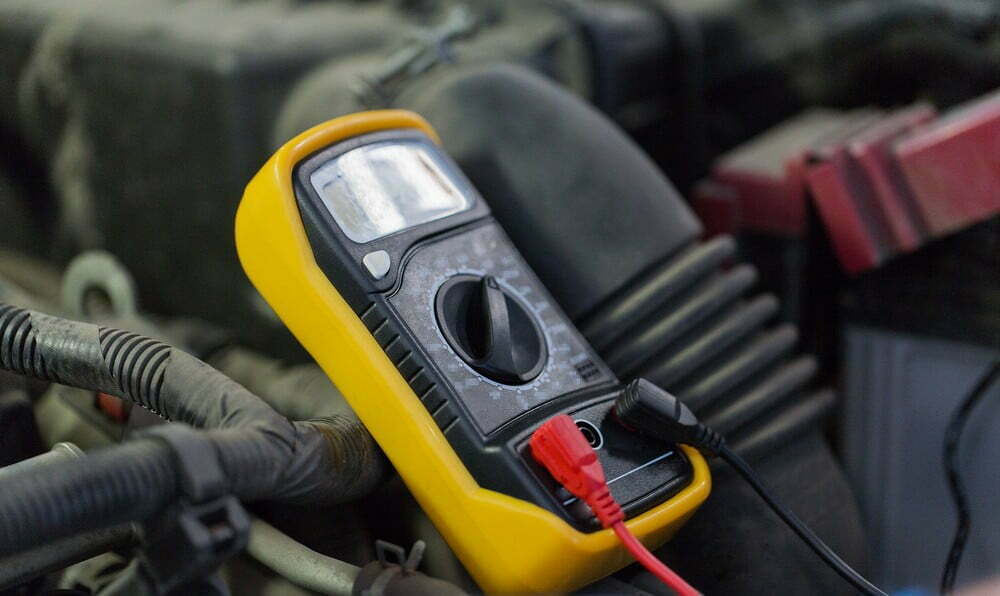
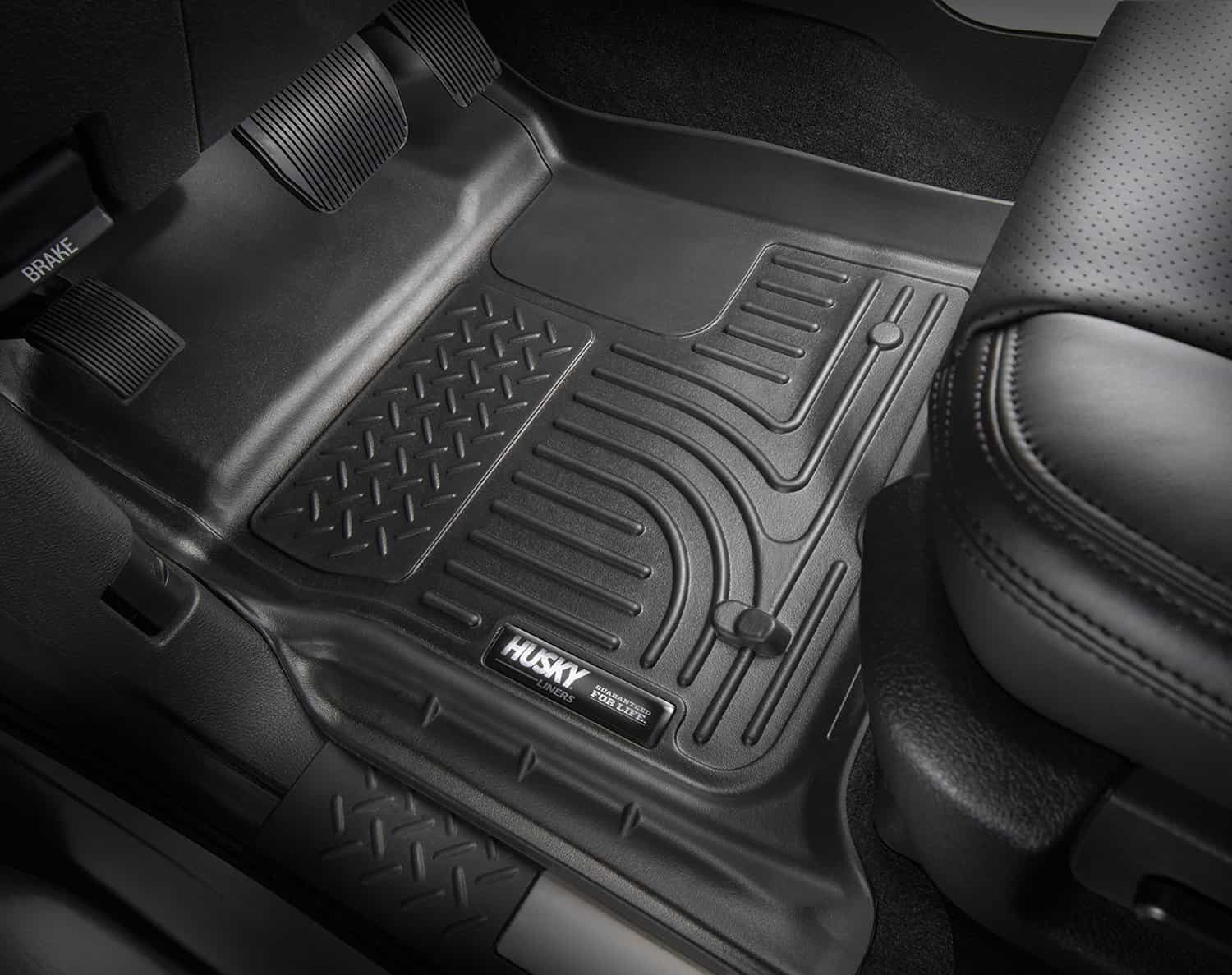
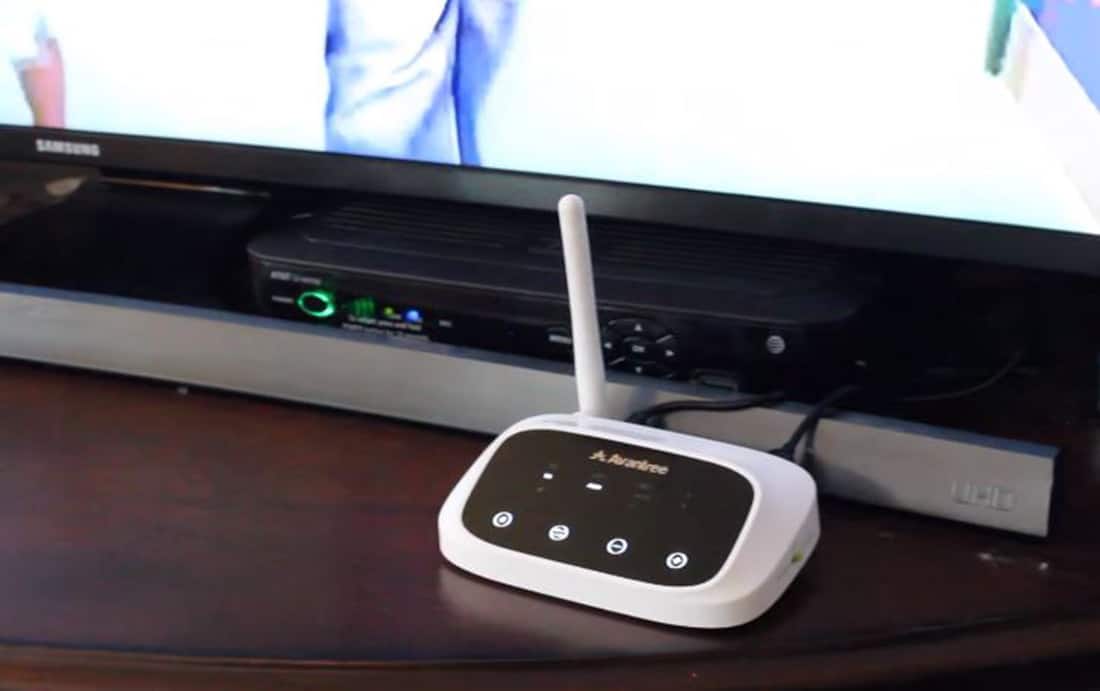
![7 Best Car Upholstery Cleaners in [year] 26 7 Best Car Upholstery Cleaners in 2026](https://www.gadgetreview.dev/wp-content/uploads/best-car-upholstery-cleaners.jpg)
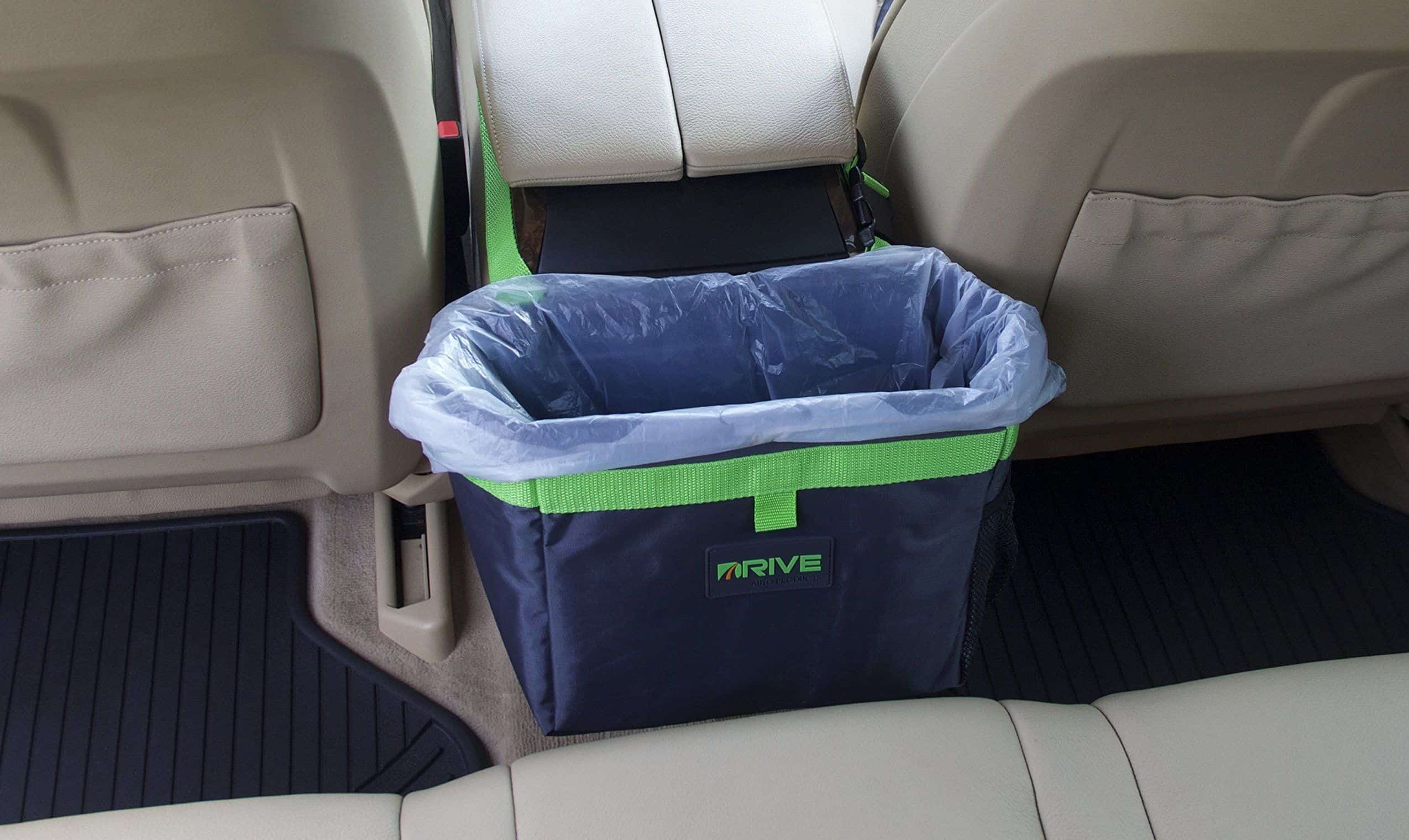
![Best RV Battery in [year] ( [month] Reviews) 28 Best RV Battery in 2026 ( January Reviews)](https://www.gadgetreview.dev/wp-content/uploads/best-rv-battery.jpg)
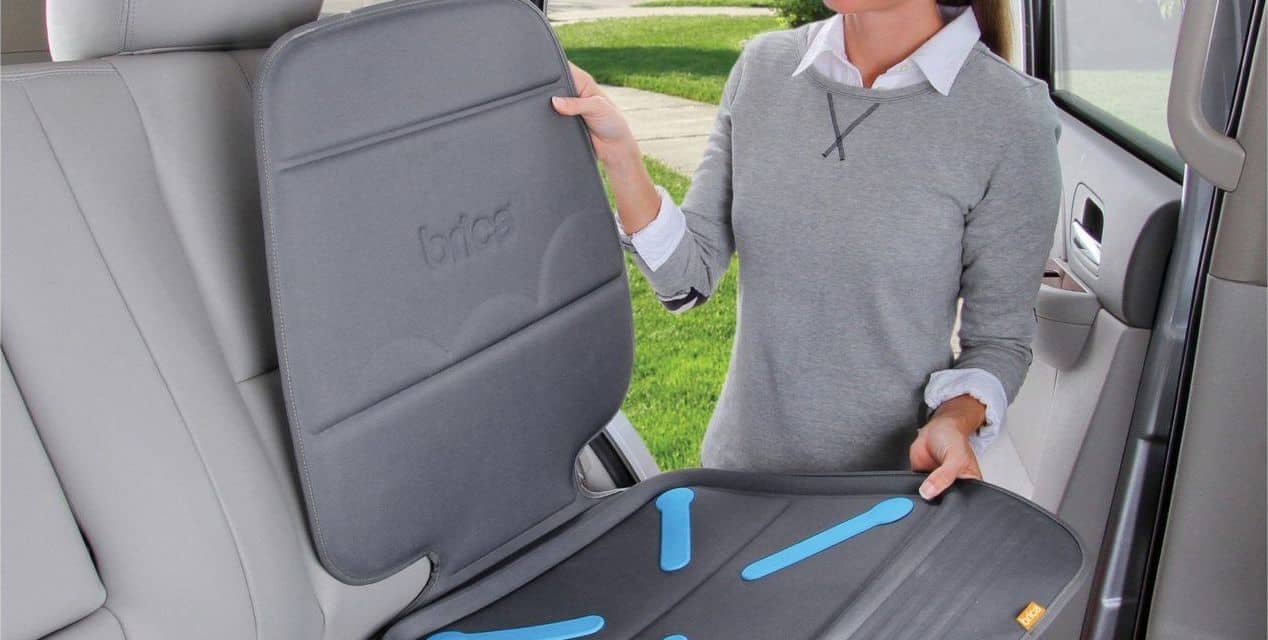
![Best Tire Inflator in [year] ([month] Reviews) 30 Best Tire Inflator in 2026 (January Reviews)](https://www.gadgetreview.dev/wp-content/uploads/best-portable-air-compressor.jpg)
